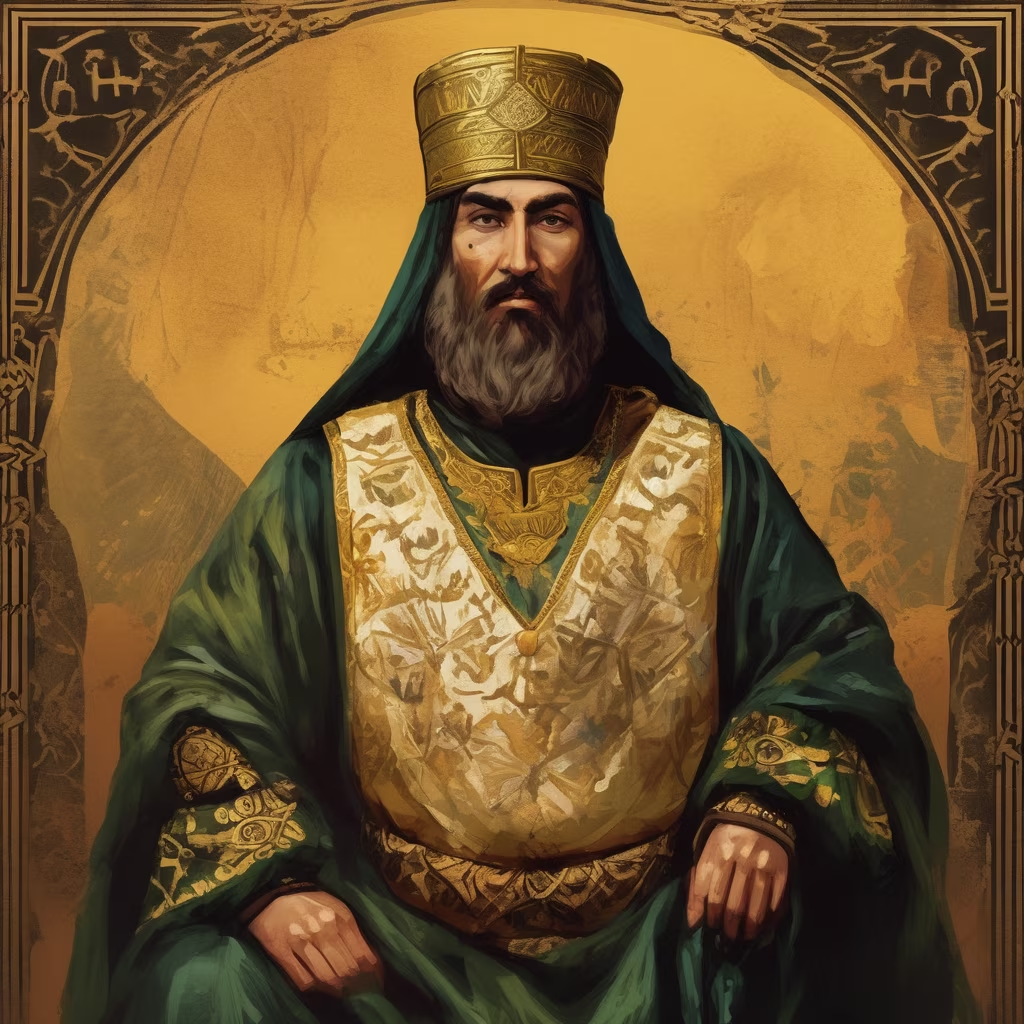Prompt: Attire: Saladin depicted in the traditional attire of a Muslim military leader from the 12th century, including a turban, long robes, and possibly armor. Facial Features: Capture Saladin's distinctive features, emphasizing his strong and wise demeanor. Pay attention to his eyes, beard, and any specific facial characteristics. Pose: Illustrate Saladin in a dignified and authoritative pose, reflecting his leadership qualities. This could involve him holding a sword or another symbol of authority. Setting: Place Saladin in a setting that reflects his historical context, such as a tent or a military camp, indicating his role as a military commander. Symbols: Incorporate symbols associated with Saladin's legacy, such as the banner of the Ayyubid dynasty or other emblems related to his rule. Color Palette: Use warm and earthy tones to evoke the historical period. Rich greens, browns, and gold can be prominent, reflecting the colors associated with Islamic art. Background: Consider adding elements that signify Saladin's achievements or the historical events in which he played a significant role, such as the Battle of Hattin. Details: Pay attention to historical accuracy, including the details of his attire, armor, and any accessories. Researching specific historical references can enhance authenticity. Style: Blend historical accuracy with artistic interpretation, creating a visually compelling representation of Saladin.

